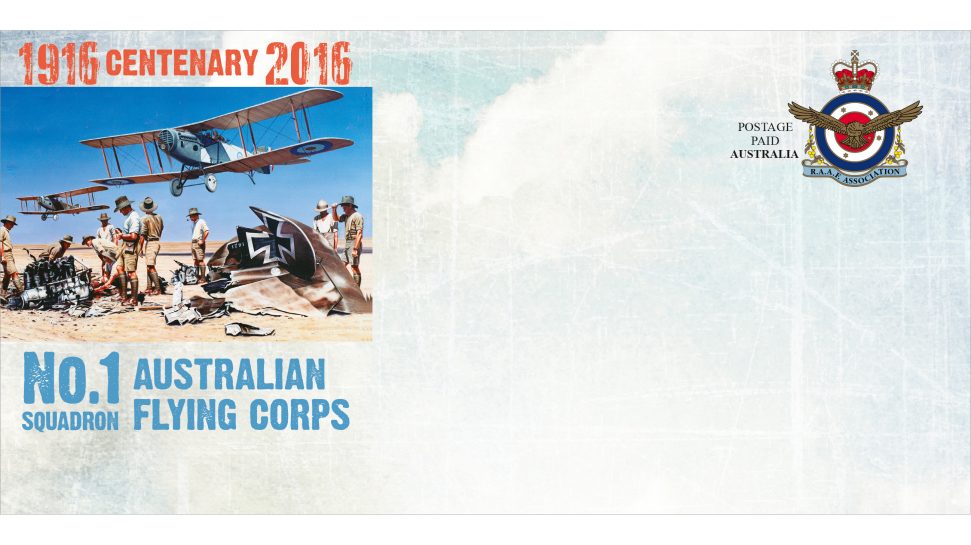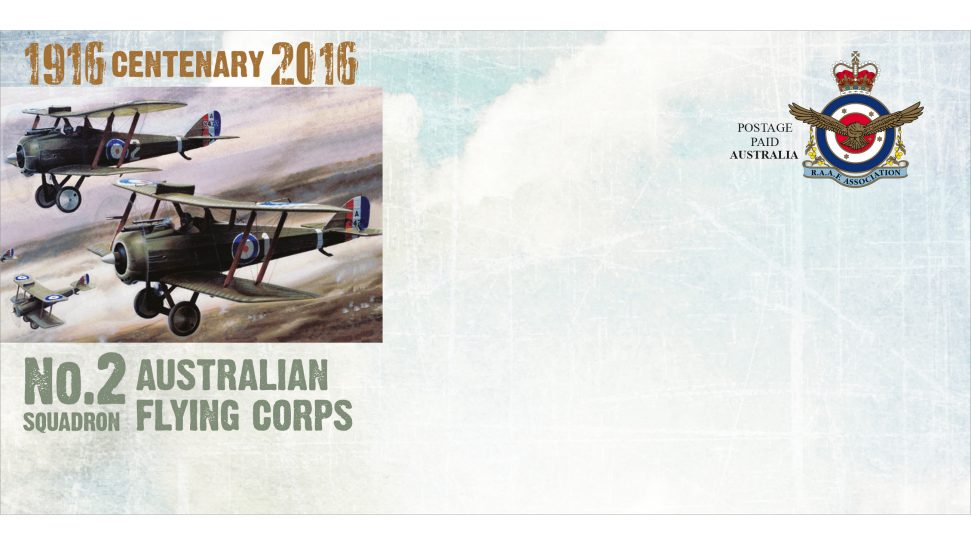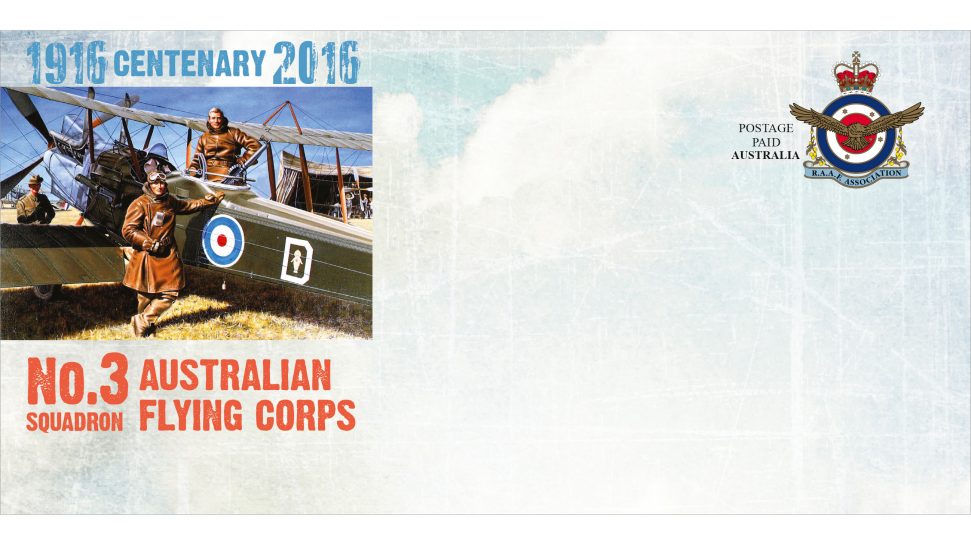Following an invitation from Britain to the dominions to form complete flying squadrons for service with the British forces, the first squadron of the Australian Flying Corps (AFC) was formed at Point Cook, Victoria in January 1916.
This issue of four Postage Prepaid Envelopes, released on 2 November 2016, commemorates the first four flying squadrons of the AFC, which gallantly served in Egypt and on the Western Front during World War I. Many AFC members went on to form the Royal Australian Air Force (RAAF) in March of 1921.
The envelopes feature artworks by Norman Clifford, which are part of the RAAF Heritage Collection, located in the RAAF Museum. The museum is aptly located at the ‘birthplace’ of the AFC in Point Cook.
No. 1 Squadron, Australian Flying Corps
The first squadron of the AFC sailed from Melbourne on 16 March and arrived in Egypt on 14 April. From May 1916 to January 1918, No. 1 Squadron operated with BE-2c, BE-12e and Martinsyde aircraft, all of which were barely adequate for their tasks of reconnaissance, photography and light bombing.
The featured painting depicts a ground party from No. 1 Squadron, AFC, inspecting a downed German Albatross near the squadron's aerodrome at Weli Sheikh Nuran (Palestine) in 1918. The two aircraft overhead are Bristol Fighter F2Bs. The introduction of these highly effective aircraft in January 1918 enabled the AFC to take the offensive to the enemy, which resulted in high German losses.
No. 2 Squadron, Australian Flying Corps
The second squadron of the AFC was formed at Kantara in Egypt, on 20 September 1916. It was Australia’s first fighter unit, equipped with de Havilland-designed DH-5s. Its initial personnel were drawn from 67 (Australian) Squadron and were soon supplemented by volunteers from the light horse regiments and extra mechanics from Australia. The squadron proceeded to the United Kingdom for training in January 1917 and in September was deployed for operations over the Western Front.
The painting on this envelope represents a flight of DH-5 fighters returning from close offensive patrol over the front line on the Western Front. Because the little aeroplane was slow and lacked manoeuverability, success in action was moderate and consequently was only used by the Australians between 21 September and 6 December 1917. It was then replaced by the SE-5 fighter which No. 2 Squadron flew for the remainder of the war.
No. 3 Squadron, Australian Flying Corps
No. 3 Squadron, the first Australian flying unit to arrive on the Western Front, was originally formed in September 1916 at Point Cook. Transported to Europe on HMAT Ulysses, it landed in England on 28 December 1916 and was sent for training to South Carlton, Lincolnshire. On 24 August 1917, three flights (each of six RE-8 aircraft) left South Molton for Lympne in Kent. Delayed by bad weather, the squadron finally arrived at its appointed aerodrome in France (Savy) on 10 September 1917.
The cover painting depicts Captain Reg. Francis beside his RE-8. The RE-8 was the standard artillery observation and reconnaissance aeroplane throughout the British Air Forces and equipped No. 3 Squadron Australian Flying Corps, supporting the 1st Australian Army Corps on the Somme. It performed a variety of roles, including artillery spotting, photographic tasks and bombing sorties.
No. 4 Squadron, Australian Flying Corps
No. 4 Squadron, the last AFC combat squadron to be formed during World War I, was established at Point Cook, in late October 1916. The unit embarked for England on 17 January, arriving at Plymouth on 27 March, and was sent for training to Castle Bromwich, near Birmingham. Equipped with Sopwith Camel fighters, the squadron arrived at St Omer, France on 22 December 1917. The Camel was difficult to fly, but once mastered, skilled pilots used its extreme agility to out-manoeuvre most enemy scouts. In experienced hands, the Camel was lethal to the German fighters.
The cover painting depicts three Sopwith Camels of No. 4 Squadron, led by Captain Harry Cobby. They attacked a flight of German Fokker triplanes 10,000 feet over the front lines in France in March 1918. The other two Camels were piloted by Lieutenant Roy King and Lieutenant RG Smallwood.
Of the eight AFC squadrons formed during the Great War, four are still operational (No. 1, No. 2, No. 3 and No. 6; the latter was a training unit in the UK during World War I). These four squadrons celebrate their centenary during 2016 and 2017.
The RAAF Postage Prepaid Envelopes are available from 2 November 2016, at participating Post Offices, online and via mail order on 1800 331 794, while stocks last.
This article was produced at the time of publication and will not be updated.





